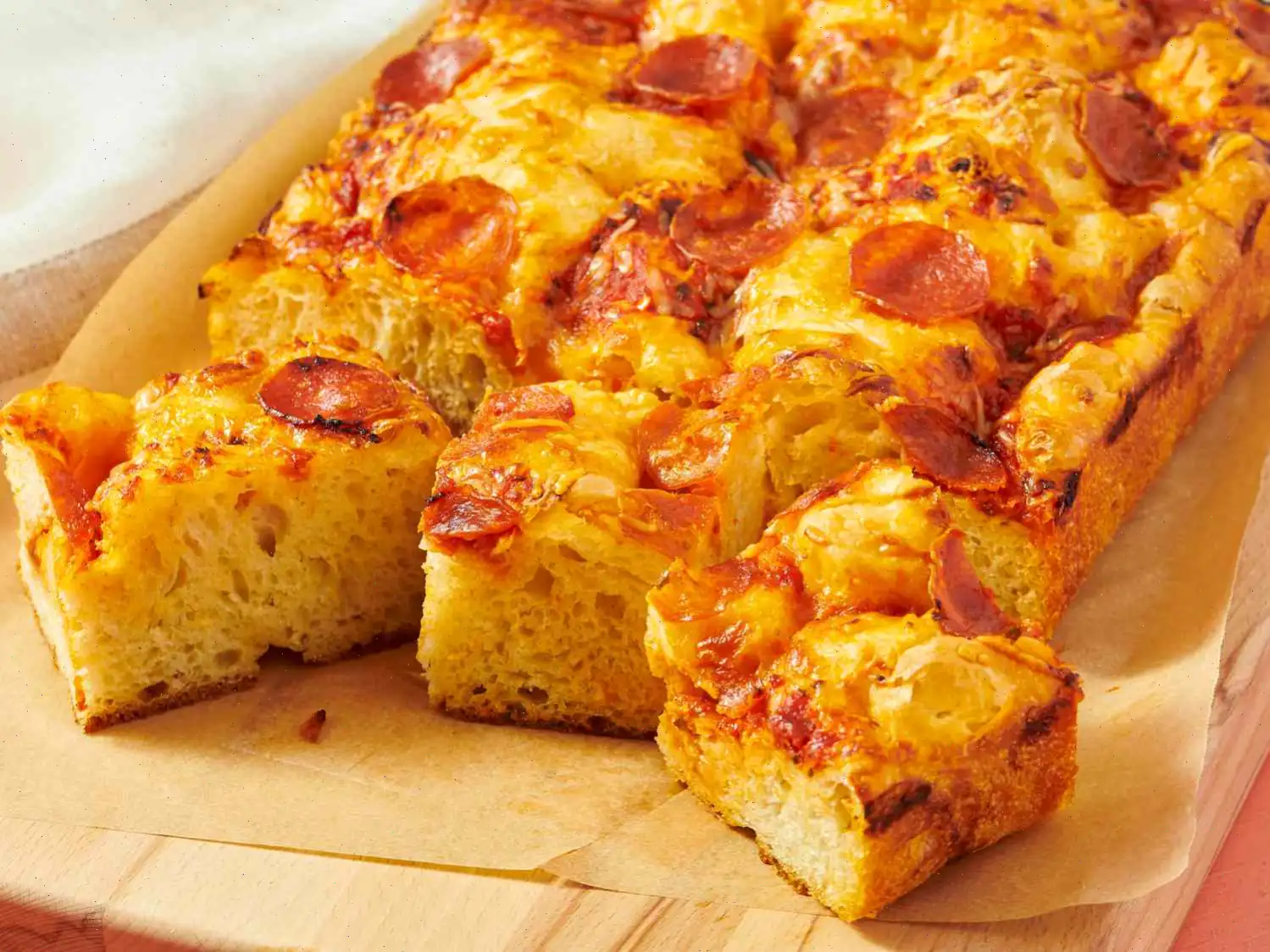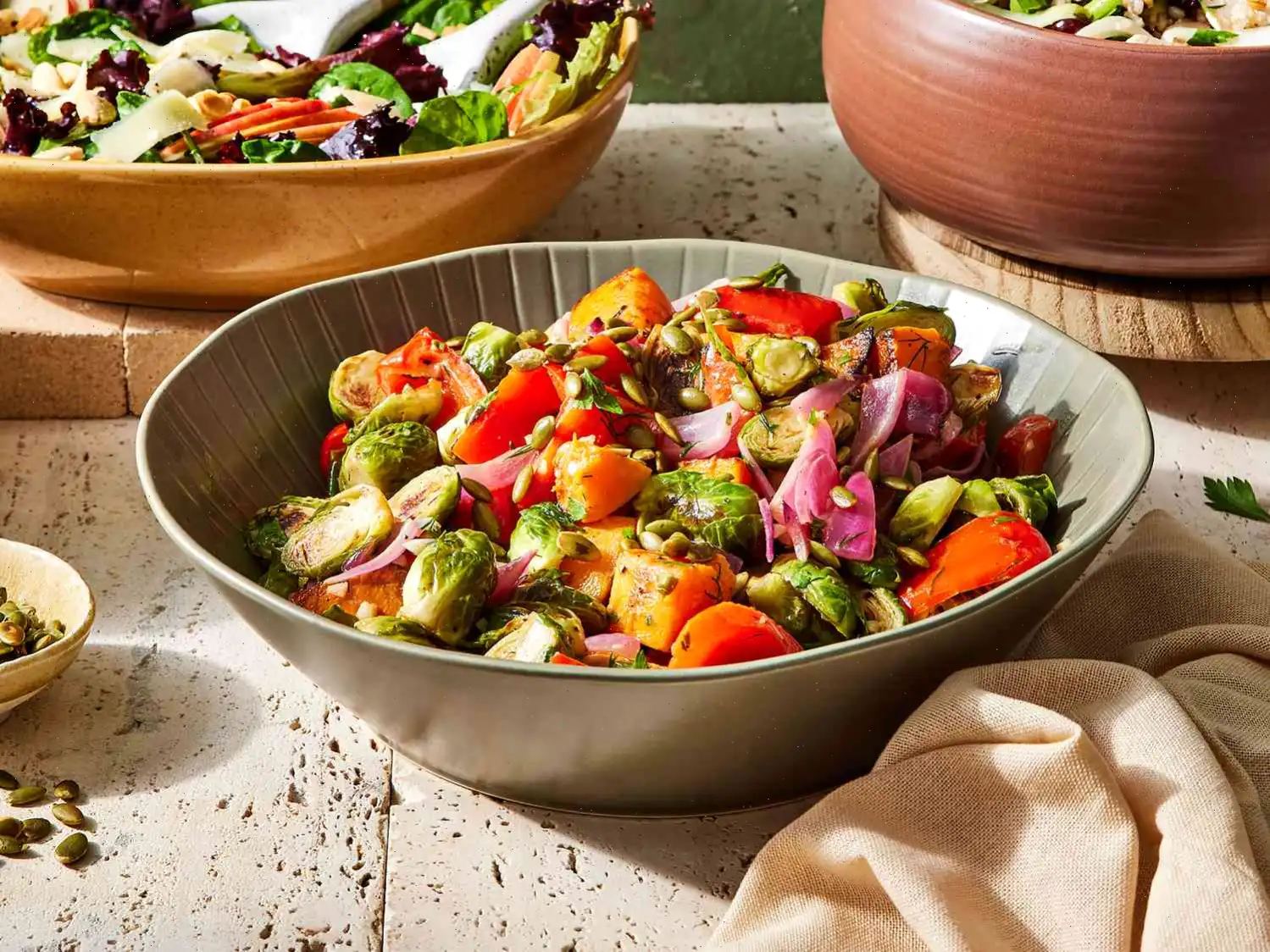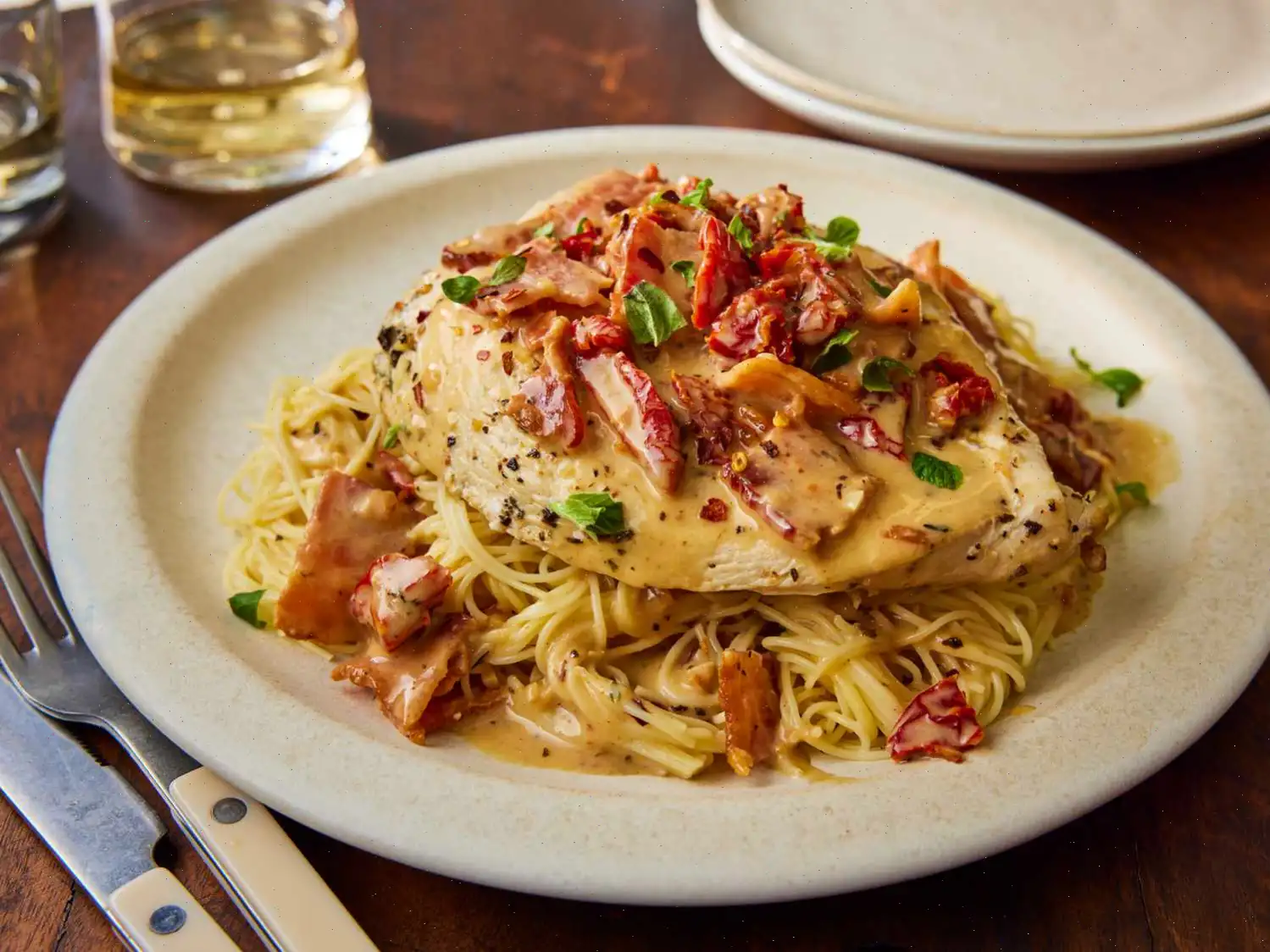
Pizza Focaccia Recipe
Ingredients
Focaccia Base:
- 2 cups lukewarm water
- 1 (0.25 ounce) packet active-dry yeast (preferably Red Star)
- 1/2 teaspoon sugar
- 2 tablespoons olive oil
- 1 tablespoon kosher salt
- 3 cups all-purpose flour
- 2 cups bread flour
Pizza Toppings:
- Olive oil, as needed
- 1 cup shredded low-moisture mozzarella cheese
- 1 cup marinara sauce
- 1/2 cup shredded Parmesan cheese
- 1/4 cup mini pepperoni slices (Optional)
Directions
For the Focaccia:
- Start by pouring lukewarm water into a large bowl. Sprinkle the yeast and sugar on top. Give it a quick stir with a dough whisk or wooden spoon and let it sit for about 10 minutes. You'll know it's ready when the top of the mixture looks foamy, like a beer.
- Stir in the olive oil and salt, then add the all-purpose flour and bread flour. Mix with the whisk or spoon until there are no visible streaks of dry flour.
- Cover the bowl with a clean cloth and allow the dough to rise for 45 minutes in a warm area.
- After 45 minutes, uncover the bowl and lightly wet your hands. Starting from the top of the dough, gently pull the edge of the dough upwards and fold it over the dough ball. Repeat this process all around the dough this technique is known as the "stretch and fold" and helps to develop the gluten.
- Cover the dough again and let it rest for 30 minutes. Repeat the stretch and fold process two more times, each time 30 minutes apart.
- After the fourth stretch and fold, cover the dough one last time and let it rise for another 30 minutes. The dough should now have doubled in size and feel smooth to the touch. At this point, its ready to use or can be refrigerated overnight for use the next day.
For the Toppings:
- Lightly oil a 9x13-inch metal cake pan. Place the focaccia dough in the pan and, using your fingers, gently stretch it into the corners of the pan.
- Cover the dough and let it rise for about 1 hour. Meanwhile, preheat your oven to 450F (230C).
- Once the dough has risen, drizzle olive oil over the surface. Use your fingers to dimple the dough, creating small indentations all over the surface.
- Sprinkle the shredded mozzarella cheese evenly across the dough. Then, spoon dollops of marinara sauce over the cheese. Finish with a generous sprinkle of Parmesan cheese.
- If you like, top with mini pepperoni slices for extra flavor.
- Place the pan in the preheated oven and bake for 25-30 minutes, or until the focaccia is golden brown and the cheese is bubbly and melted.
- Once baked, remove the focaccia from the oven and let it sit in the pan for about 10 minutes. Then, carefully slide it onto a cutting board and allow it to cool for an additional 10 minutes before slicing and serving.
Cook's Note:
If you prefer to use a kitchen scale for precise measurements, here are the ingredient weights for the focaccia base:
- 500 grams lukewarm water
- 1 (7 gram) packet active-dry yeast
- 1/2 teaspoon sugar
- 30 grams olive oil
- 15 grams kosher salt
- 400 grams all-purpose flour
- 250 grams bread flour
Nutrition Facts (per serving):
- Calories: 338
- Total Fat: 9g (11% Daily Value)
- Saturated Fat: 3g (15% Daily Value)
- Cholesterol: 12mg (4% Daily Value)
- Sodium: 635mg (28% Daily Value)
- Total Carbohydrate: 51g (19% Daily Value)
- Dietary Fiber: 2g (8% Daily Value)
- Total Sugars: 2g
- Protein: 12g (24% Daily Value)
- Vitamin C: 1mg (1% Daily Value)
- Calcium: 125mg (10% Daily Value)
- Iron: 2mg (13% Daily Value)
- Potassium: 171mg (4% Daily Value)
* Percent Daily Values are based on a 2,000-calorie diet. Your daily values may be higher or lower depending on your calorie needs.
The Origins of Pizza Focaccia
Pizza focaccia is an Italian culinary creation that merges two beloved staples of Italian cuisine: focaccia and pizza. Focaccia itself dates back to ancient Rome, where it was baked as a flat, olive-oil-rich bread often flavored with herbs. Over time, Italian bakers began experimenting with toppings, adding cheese, tomato, and cured meats, which eventually led to the pizza-style focaccia we know today. This dish embodies centuries of Italian baking traditions while showcasing the country's inventive approach to food.
Regional Variations
While focaccia is popular throughout Italy, its style and preparation vary by region. In Liguria, focaccia is traditionally simple, brushed with olive oil and sprinkled with sea salt. In contrast, pizza focaccia, often associated with Northern and Central Italy, incorporates thicker layers, tomato sauce, and cheese, resembling a deep-dish pizza. Some regions, such as Tuscany, add herbs like rosemary, while others experiment with toppings like olives, onions, or thinly sliced meats, reflecting local tastes and ingredient availability.
Differences from Similar Dishes
Pizza focaccia differs from traditional pizza primarily in its dough and texture. While pizza dough is typically thin and crisp, focaccia dough is enriched with olive oil and has a spongy, airy crumb due to extended proofing and the stretch-and-fold technique. Unlike classic focaccia, which is usually served plain or with minimal toppings, pizza focaccia features layers of cheese, sauce, and optional meats, bridging the gap between bread and pizza. Its unique combination of a soft, oily base with flavorful toppings sets it apart from other Italian breads and pizzas.
Where Its Commonly Served
Pizza focaccia is a versatile dish found in both casual and formal settings. In Italy, it is often served at family gatherings, picnics, or as a street food snack. Restaurants may offer it as an appetizer, side dish, or main course, especially in trattorias that focus on regional breads. Its approachable texture and flavorful toppings make it a popular choice for home cooks as well, particularly for weekend meals or celebratory occasions where sharing a large, pull-apart focaccia adds a communal dining experience.
Interesting Facts
- The stretch-and-fold method used in pizza focaccia dough development replaces traditional kneading and helps create its characteristic airy texture.
- Some modern variations drizzle honey over hot focaccia after baking to add a subtle sweet contrast to the savory toppings.
- Pizza focaccia can be made ahead of time, and chilling the dough overnight enhances flavor through slow fermentation.
- Despite its name, pizza focaccia is technically closer to a bread than classic pizza, highlighting the fluidity of Italian culinary classifications.
- In certain Italian regions, pizza focaccia is sometimes served as part of a buffet or aperitivo, cut into small squares for easy sharing.
FAQ about Pizza Focaccia Recipe
Comments
Richard Miller
07/18/2024 03:23:51 AM
The outcome was fantastic! Following the stretch and fold technique, I covered the bowl and refrigerated the dough overnight. This led to a significant rise, causing the dough to overflow from the tall stand mixer bowl it was resting in. I'm not sure if this contributed to it, but the end result was an impressively tall focaccia, measuring around 3.5 - 4 inches high. I opted to bake it in a 9x13 ceramic dish instead of a metal one, which extended the baking time by approximately 5 minutes (total of 35 minutes). The only other adjustment I made was measuring the yeast, as I use a larger container of active dry yeast rather than individual packets. I found that 0.25 oz equals 2.25 teaspoons.








